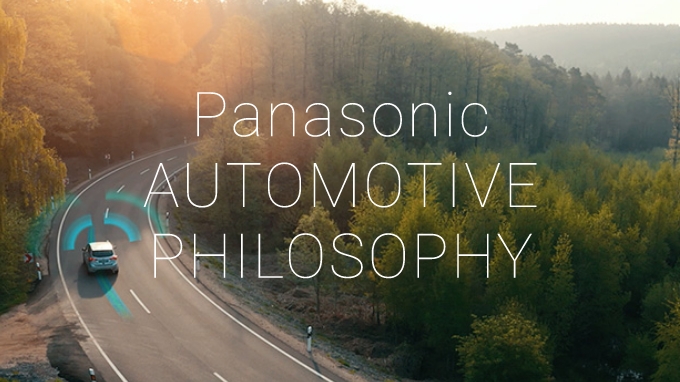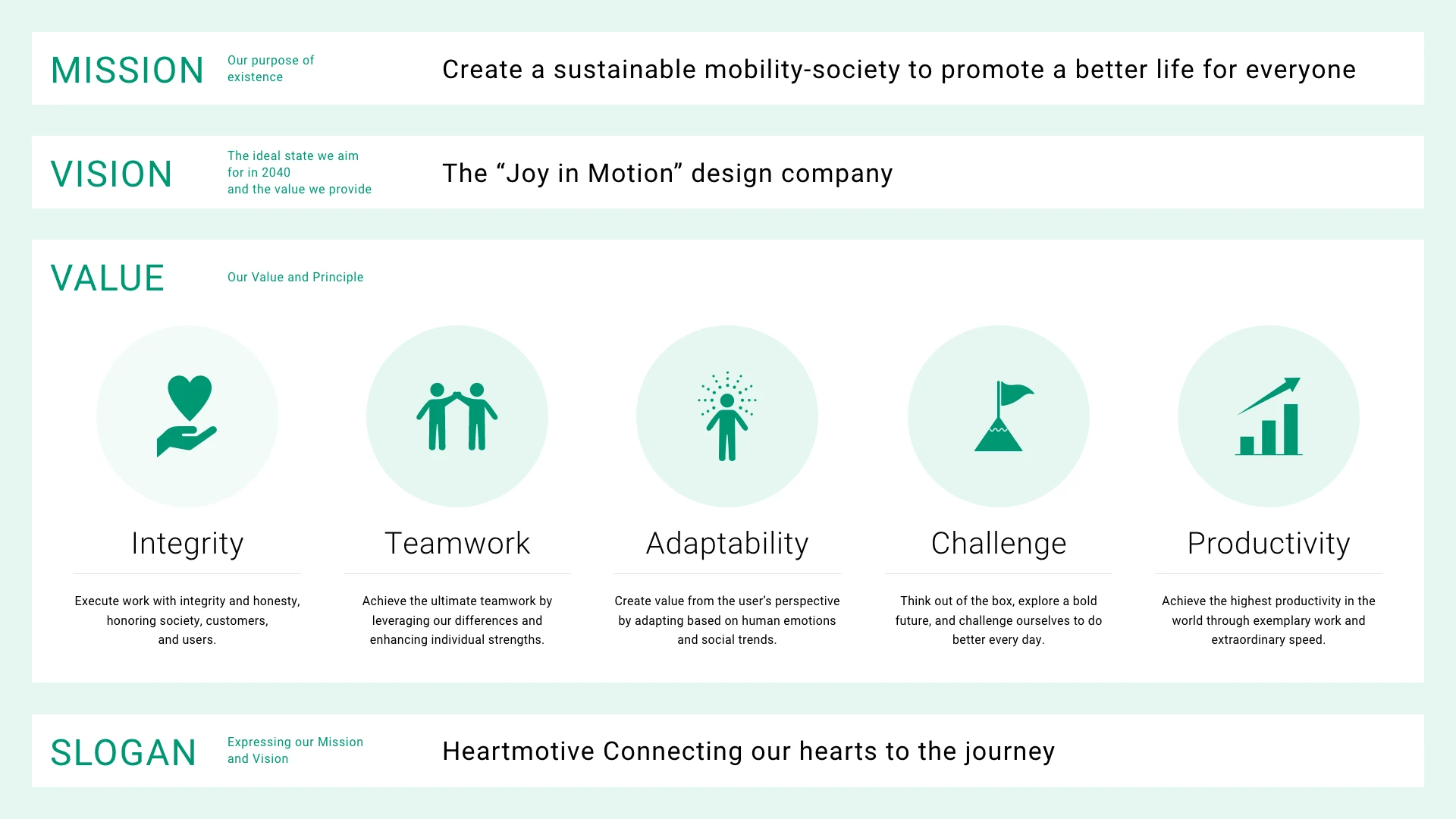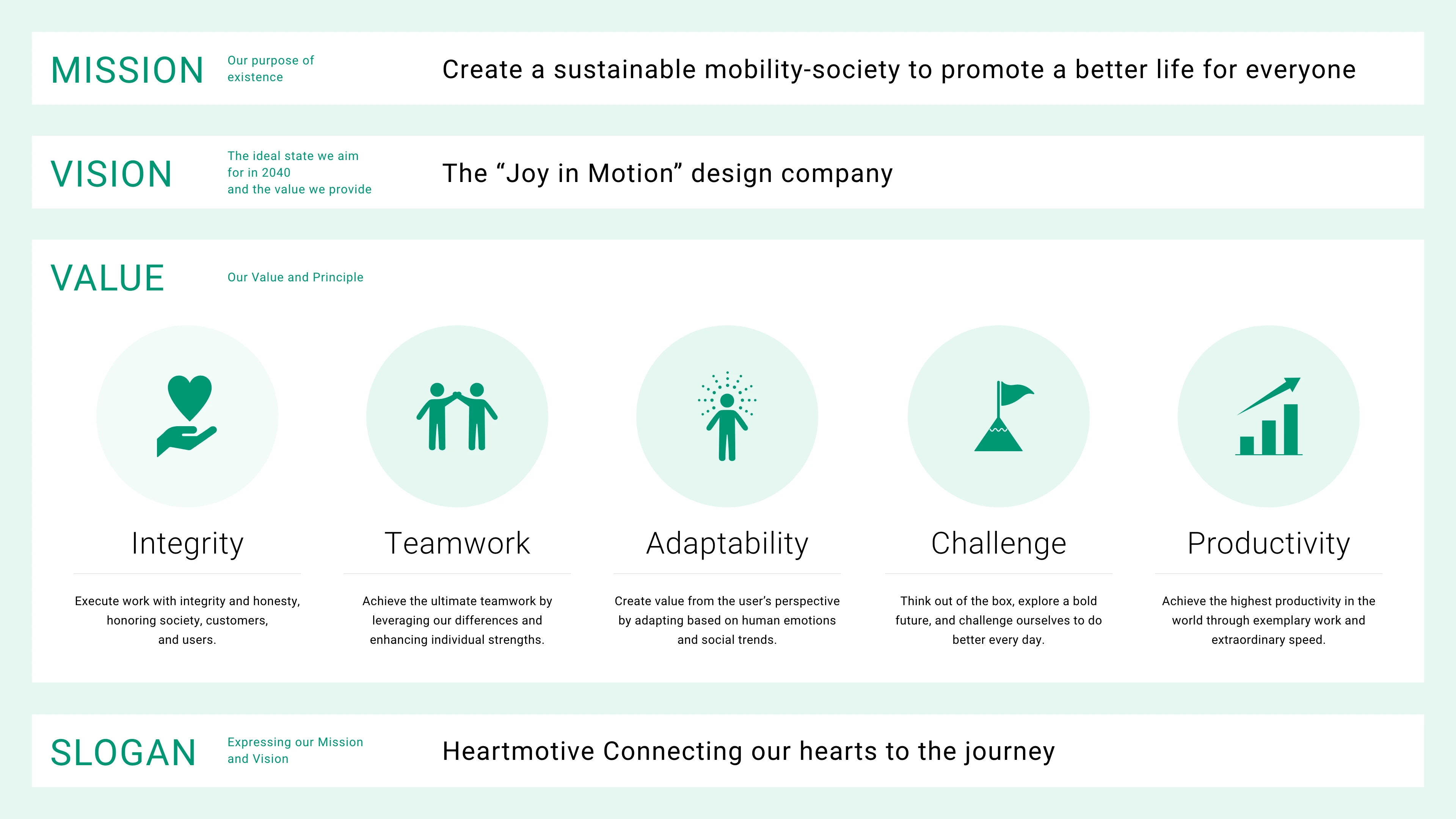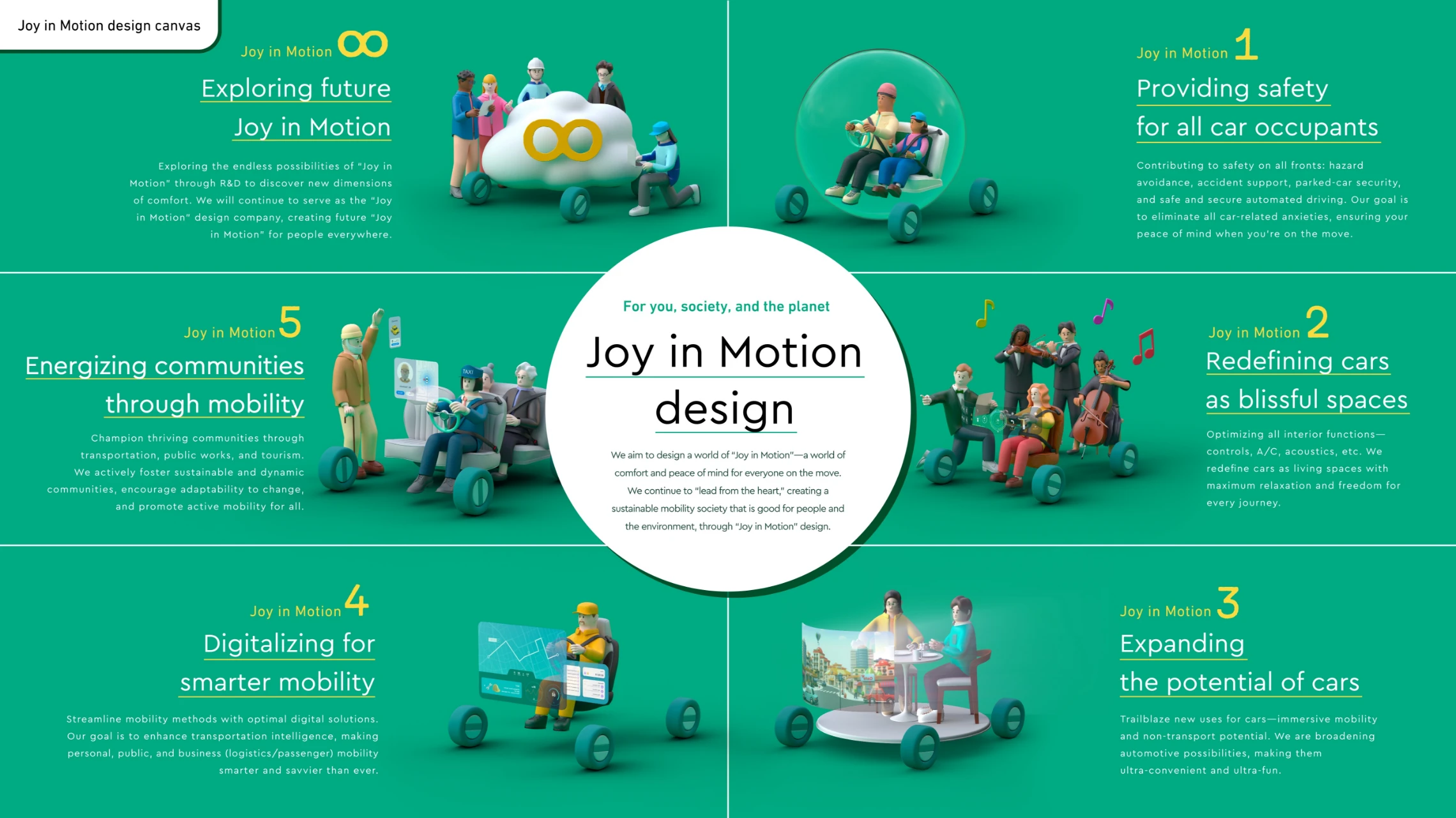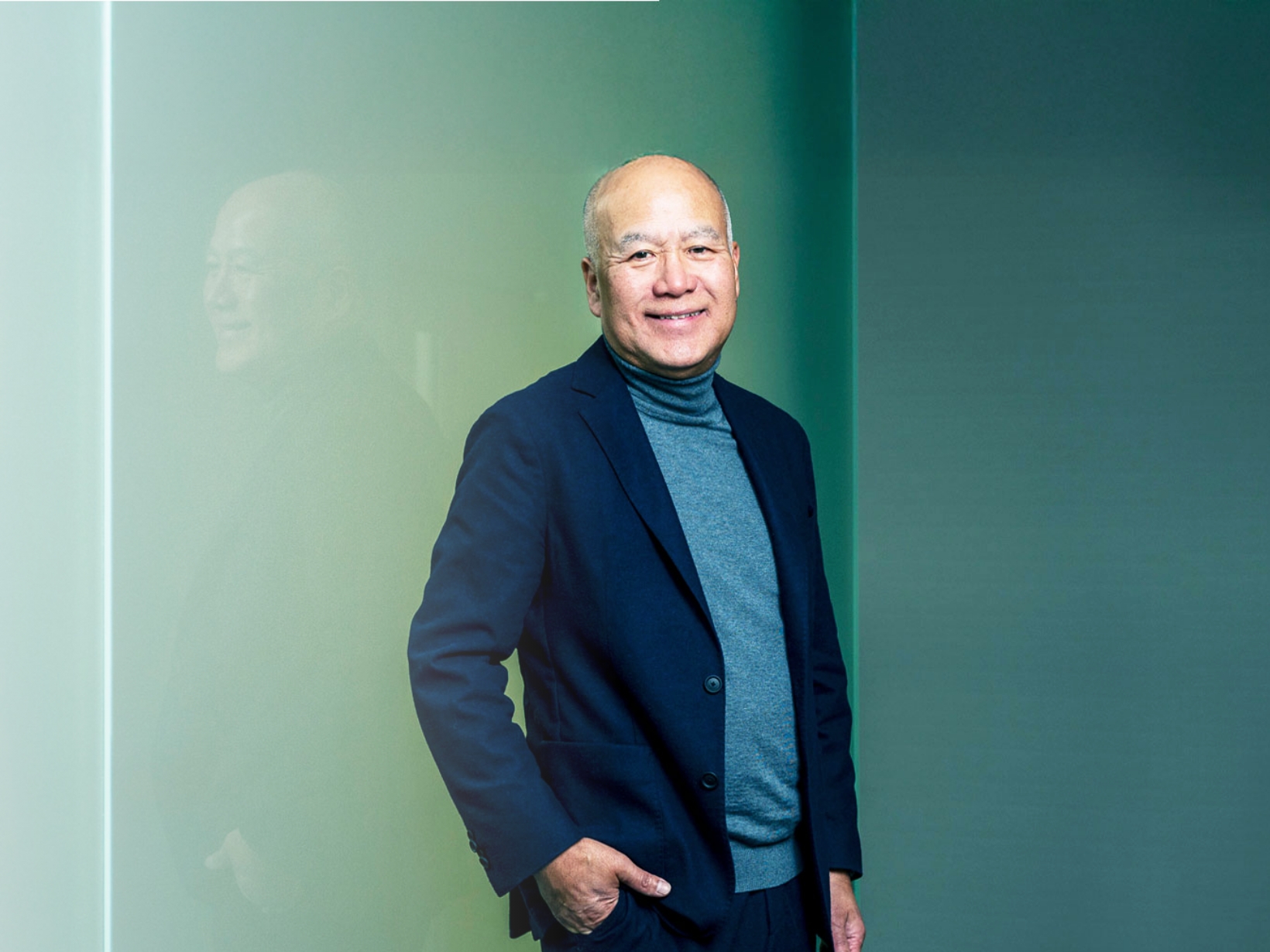
In 2024, Panasonic Automotive Systems introduced its vision to become the world’s leading “Joy in Motion” design company. CEO Masashi Nagayasu will share the inspiration and outlook behind this new vision, expressing our commitment to creating comfort not only in vehicles but throughout society as a whole.
A vision needed for a once-in-a-century transformation
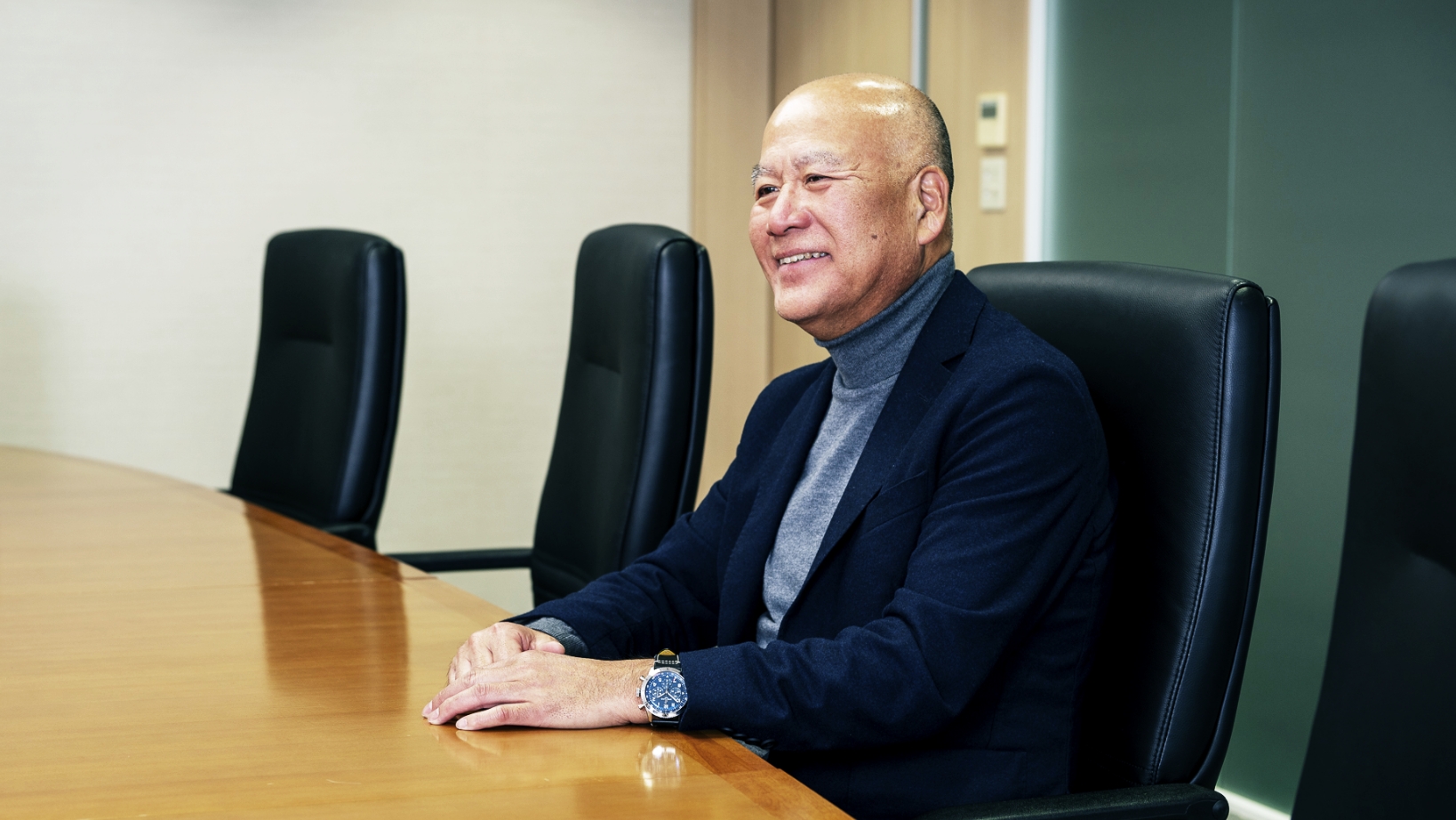
Can you tell us about the background behind the emergence of the new vision?
When we launched as a business entity in 2022, we defined our mission as “creating a sustainable mobility society to improve lives for everyone.”The automotive industry is undergoing a once-in-a-century transformation, addressing challenges such as emissions-related environmental concerns, urban congestion, eliminating traffic accidents, and ensuring safe mobility spaces. Amid these significant changes, we aimed to establish a clear vision and steadily work toward realizing our mission.
That’s the vision of becoming the "Joy in Motion" design company, right?
To achieve our mission, we carefully considered how to better articulate the
value we
provide. After extensive discussions among executives, we defined our vision as
becoming the world’s leading "Joy in Motion" company.
The term "Joy in
Motion"
represents our commitment to making every form of movement an enjoyable
experience
by creatively designing solutions that seamlessly integrate into people’s daily
lives. True comfort comes from being in tune with people’s emotions. It is our
ability to deeply understand and connect with people that allows us to deliver
the
value of "Joy in Motion."
An Era Where Software Transforms Mobility
What kind of technological transformations are underway?
One major shift is toward Software-Defined Vehicles (SDV) *¹. The
Ministry
of Economy, Trade, and Industry has identified SDVs as a key focus area in its
2024
mobility DX strategy to drive industry transformation. We anticipate that
software-based vehicle development will accelerate, intensifying international
competition.
SDVs primarily enable faster development cycles. By decoupling
hardware from software, vehicles can continuously update their features—much
like
smartphones. Furthermore, when integrated with autonomous driving technology,
SDVs
will introduce new vehicle value propositions. Additionally, data generated by
these
vehicles will unlock new business opportunities, further transforming the
mobility
landscape.
- *1 SDV: Software-Defined Vehicle—a vehicle designed and developed with the ability to update and enhance its functionality through software advancements.

Could you elaborate a bit more on the separation of hardware and software?
I believe that the hardware ensures driving performance and safety, which supports mobility, while software offers various values freely on top of that. We want to leverage insights gained from being close to people and their lives in the vehicular domain, transforming travel time into a more comfortable, safe, and secure experience from a human-centered perspective. Furthermore, we plan to shift the mindset to propose that mobility also exists when one is not in motion. After all, cars spend more time parked than driving, so how we can provide value in terms of space and experience inside the vehicle is crucial. This includes proposing new uses of cars, such as sharing instead of ownership.
Global perspective and motivation shift
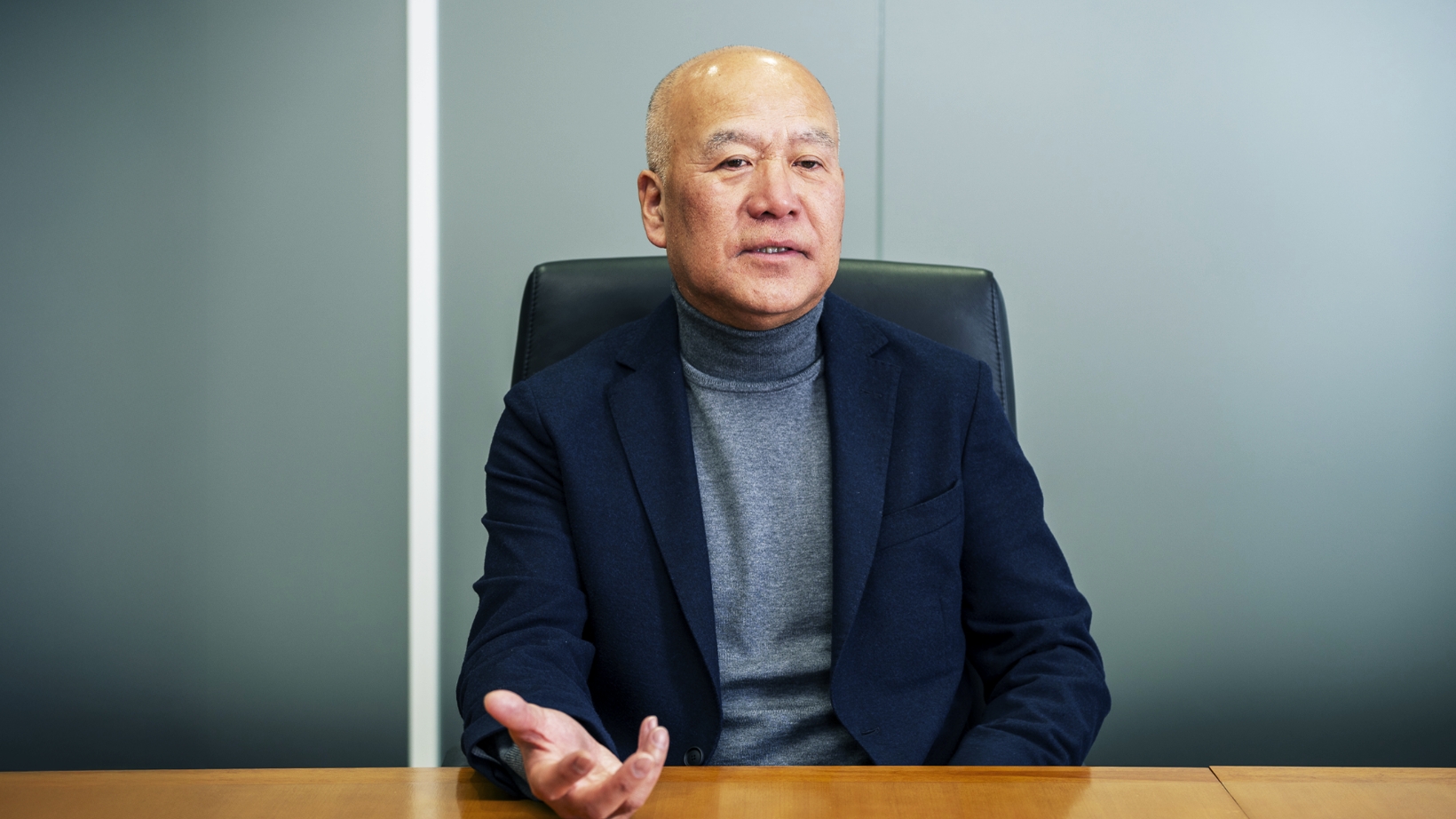
What synergies do you expect from the partnership with Apollo?
Addressing mobility challenges requires a global perspective. In 2024, we were
fortunate to establish a strategic partnership with Apollo *², a
global
asset management company. We believe this collaboration will provide strong
support
in our pursuit of becoming the world’s leading company in our field.
Beyond
expanding the financial resources needed for software development and gaining
insights from Apollo’s investments in top-tier companies worldwide, I believe
the
most crucial impact lies in the internal transformation of our employees.
To
reach the top, we must continually self-reflect, challenge our comfort zones,
and
maintain an outward-focused mindset with agile and strong management. The
partnership with Apollo is a key driver in energizing and reshaping our
motivation
and approach as we push toward global leadership.
- *2 Apollo: Apollo Global Management, Inc., a leading investment fund based in New York. https://www.apollo.com/japan
Envisioning the future from the user’s perspective
Can you share your vision for “Joy in Motion”?
We have created a canvas for “Joy in Motion” as a foundation to realize our
vision.
We will develop “Joy in Motion” from multiple perspectives, including safety and
security, comfort, expanding vehicle possibilities, digitalization, and
community
engagement. Through these angles, we aim to create new dimensions of “Joy in
Motion”
that have never existed before.
Above all, maintaining a user-centered
perspective is essential. While we operate as a B2B company, we always keep real
end-users in mind, embracing a B2B2C mindset. Moving forward, a key focus will
be on
how personalized our technology can become.
Perceptions of comfort and
concern
vary widely from passenger to passenger. We will incorporate this understanding
into
all of our technologies, ensuring they reflect and adapt to individual
differences.
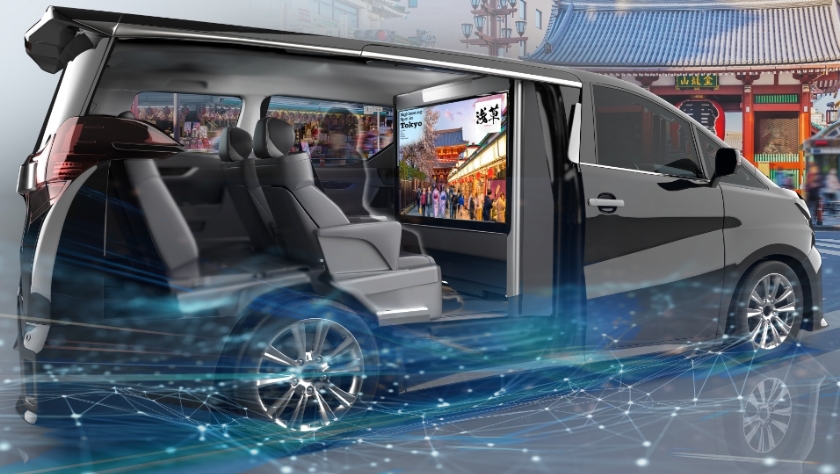
What do you think are the strengths of your company?
I believe our strengths lie in the accumulation of know-how and expertise from a
business deeply integrated into daily life, as well as our overall
capabilities.
For example, with the introduction of the *“WELL
Cabin”*³ in 2024, we aim to create a movement experience that touches
the
heart, offering a truly comfortable cabin space. By leveraging our extensive
technical expertise in audio-visual devices, we will deliver in-car experiences
that
feel like a living room in motion.
Additionally, our advanced image
processing
and sensor technologies are deeply integrated into various onboard devices, such
as
cameras, electronic mirrors, and head-up displays, giving us a strong technical
advantage in the mobility space.
- *3 WELL Cabin: A cabin space featuring state-of-the-art hardware, including a 55-inch transparent OLED display, 3D high-resolution speakers, built-in seat sound exciters, and an aroma diffuser.
Achieving sustainable mobility through
"Joy in Motion" design
What do you aim for as your company’s social responsibility?
Addressing social issues requires collaboration across various organizations and
technologies, and we strive to play a coordinating role in this cooperative space.
We
take pride in being a company that serves as an enabler of sustainable
mobility.
One
example is our collaboration with the city of Muroran on MaaS*⁴, aimed at
enhancing services for residents. Through mobility solutions, we are tackling
regional
challenges such as optimizing taxi operations and improving waste collection
efficiency.
With years of expertise in developing user-interactive devices and
software, we combine technical know-how with a corporate culture that values
honesty,
integrity, and mutual respect. By leveraging our unique position to facilitate
cross-industry collaboration, we are committed to realizing our vision of becoming
the
world’s leading “Joy in Motion” design company. Ultimately, it is our dream that our
technology will benefit every vehicle and accompany everyone.
- *4 MaaS (Mobility as a Service): A concept that integrates multiple modes of transportation into a seamless service using information and communication technology, optimizing mobility for users.
※ The content of the article is at the time of publication.

Masashi Nagayasu
Panasonic Automotive Systems Co., Ltd.
Representative Director
President, Chief Executive Officer (CEO)
